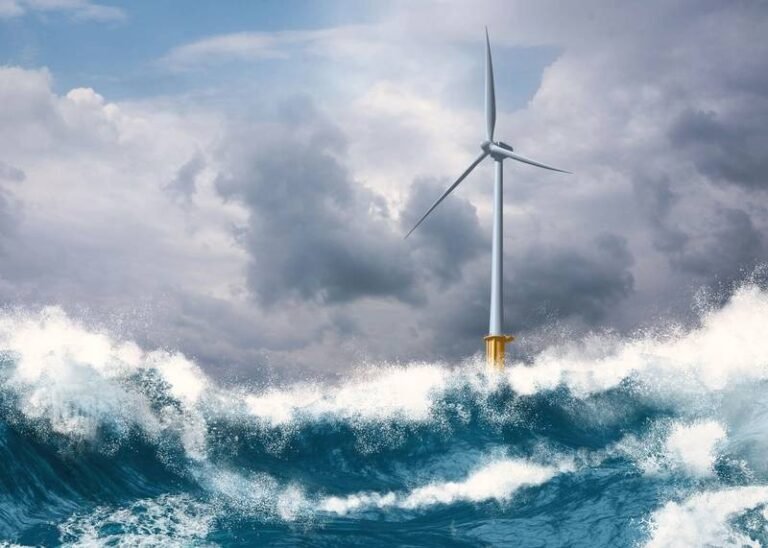Challenges Facing the U.S. Offshore Wind Industry
Companies that once committed to investing in U.S. offshore wind infrastructure and supply chains are now scrapping their plans as the industry experiences significant challenges. These setbacks stem from project delays, soaring costs, and the potential loss of federal support under former President Donald Trump’s proposed policies.
The downturn in the offshore wind sector over the past two years has led to prolonged project delays, budget overruns, and even outright failures of planned wind farms, threatening thousands of jobs and billions in investments.
“When a project fails to move forward entirely, there is a ripple effect for businesses across the national supply chain that isn’t limited to a single state,” said Stephanie Francoeur, SVP of marketing and communications at the offshore wind industry trade group Oceantic.
As recently as 2022, market research firm 4C Offshore had predicted that the U.S. would surpass former President Joe Biden’s target of installing 30 gigawatts of offshore wind capacity by 2030. However, last year, the firm revised its projections to under 25 GW.
Investment Pullback and Project Revisions
In New Jersey, a major offshore wind port, initially planned as a critical staging ground for East Coast wind expansion, is now being repurposed. Billions of dollars in contracts for offshore wind support vessels have dried up, and manufacturers are shelving their plans, according to public statements and Reuters interviews with industry executives, business groups, and state officials.
The industry’s struggles have been exacerbated by the increasing costs of offshore wind development and uncertainty surrounding federal support. Trump recently paused new federal offshore wind leasing, arguing that turbines are unsightly, costly, and harmful to wildlife. His broader energy policies focus on boosting U.S. oil and gas production while cutting government spending on climate change initiatives.
Impact on Shipbuilding, Ports, and Manufacturing
Shipbuilders have witnessed a sharp decline in orders for vessels designed to support offshore wind operations, which has had a cascading effect on steel manufacturers and shipyards across the country. Oceantic reported that while the industry saw approximately $2 billion in orders over the past decade for ships to transport crews and install turbines, only one new ship order has been placed in 2024. Nearly two dozen shipyards in 13 states were initially engaged in building or retrofitting vessels, but many now face dwindling demand. “Manufacturers and steel providers across the Midwest lose expected work they based plant expansions around, and small businesses look at empty order sheets,” Francoeur noted.
Meanwhile, New Jersey’s Economic Development Agency is reevaluating its plan for an offshore wind port in Salem County due to changing federal policies. Originally proposed in 2020 as a key hub for the industry, the 2,200-acre facility was expected to handle the enormous size and weight of offshore wind turbines. Now, state officials are considering alternative uses for the site. The uncertainty extends to wind developers as well. Atlantic Shores, a joint venture between EDF and Shell, was the sole bidder in a recent state procurement program, but New Jersey regulators declined to award the contract. Danish wind energy company Ørsted had previously committed to projects in the state but withdrew in late 2023, further weakening the industry’s foothold.
NY’s Offshore Wind Struggles
In New York, two ports along the Hudson River were expected to benefit from $2 billion in offshore wind investments, including factories producing turbine blades and towers. However, General Electric’s renewable energy division, GE Vernova, abandoned plans for a larger offshore wind turbine, which included a deal to produce components at the Port of Coeymans. Similarly, the Port of Albany had begun multi-million dollar upgrades in 2021 to support a tower factory, but rising costs have stalled the project. “With changes to the offshore wind and renewables industry – impacted by federal administration policy shifts and shifting commitments from developers – the project as originally planned has moved to a phased development approach,” said Port of Albany spokesperson Penny Vavura.
Cable Producers
Submarine cable producers are also scaling back their investments. Italy-based Prysmian recently scrapped its plan to build a submarine cable factory in Massachusetts, revealing the decision the day after Trump took office. Although the company stated the decision was not politically motivated, its 18 billion euro transmission business is now focused entirely on Europe. Korean company LS Greenlink, however, remains committed to building a $681 million submarine cable factory in Chesapeake, Virginia, with the flexibility to serve both offshore wind and land-based projects. However, managing director Patrick Shim indicated that an expansion of the facility remains on hold due to industry uncertainties.
The Port of New Bedford in Massachusetts has been a staging ground for the nation’s first major offshore wind project, Vineyard Wind. While the port hopes to support future projects, its leadership is closely monitoring federal policy shifts before committing to further offshore wind expansion.
“Offshore wind has presented us with a diversification opportunity for the port to supplement our core industries of commercial fishing, recreational boating, cargo, and other marine activities,” said Gordon Carr, the port’s executive director. “That work will continue with the ongoing Vineyard Wind project, and we will wait and see on what comes next.”
With uncertainties surrounding federal policy, fluctuating project costs, and wavering commitments from industry leaders, the future of offshore wind in the U.S. remains unclear. For now, the industry’s anticipated boom appears to be faltering, leaving investors and policymakers scrambling for solutions.
(Reuters + Staff)

